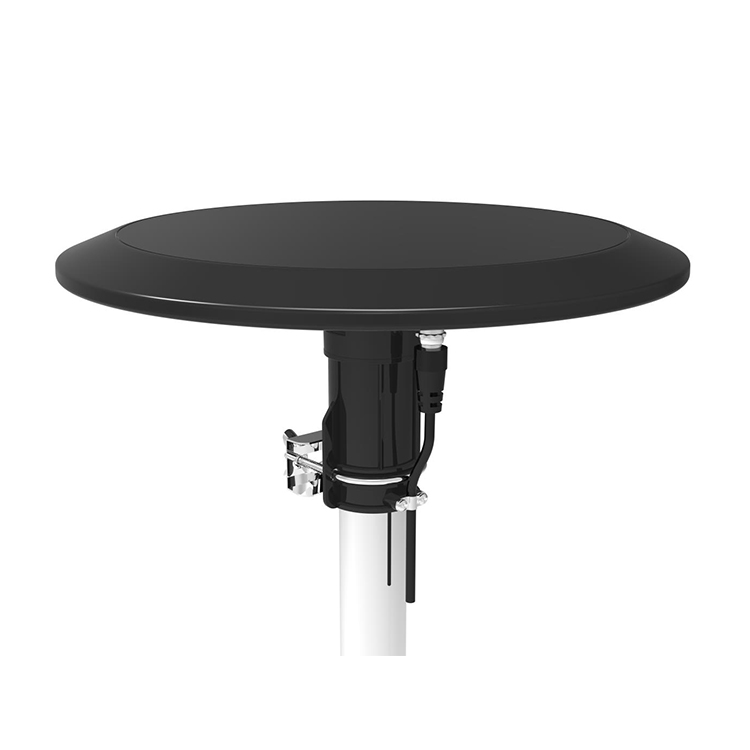Search by posts
Product category
News
 By Admin
By Admin
What are the common troubleshooting steps for addressing reception issues with indoor TV antennas?
Troubleshooting reception issues with indoor TV antennas can help improve the quality of your over-the-air signal. Here are common troubleshooting steps to address such issues:
1.Check the Antenna Placement:
Proper antenna placement is crucial for good reception. Position the antenna near a window or as high as possible within your living space. Avoid locations obstructed by walls, large furniture, or metal objects that can interfere with signals.
2.Check for Signal Strength and Quality:
Most modern TVs have built-in signal strength and quality meters in their settings. Use these tools to assess the received signal. Aim for a signal strength of at least 70% and minimal signal quality fluctuations to ensure a stable picture.
3.Rescan for Channels:
Over-the-air channels can occasionally change their frequencies or add new channels. Periodically perform a channel rescan on your TV to ensure it detects all available channels in your area.
4.Antenna Orientation:
Experiment with the orientation of your antenna. Small adjustments, like rotating it or changing its angle, can have a significant impact on signal reception. Consult online signal maps to determine the direction of nearby broadcast towers.
5.Use an Amplifier:
Signal amplifiers, also known as preamplifiers, can be effective in boosting weak signals. However, only use an amplifier if you genuinely have a weak signal. Ensure that the amplifier is compatible with your antenna, and follow installation instructions carefully.
6.Check for Interference:
Identify potential sources of interference within your home. Electronic devices, including routers, cordless phones, and microwave ovens, can disrupt signal reception. Also, fluorescent lights and building materials can attenuate signals.
7.Select the Correct Input:
Confirm that your TV is set to the correct input source, such as "Antenna" or "TV," to receive signals from the indoor antenna. Accidental input selection changes can lead to signal loss.
8.Inspect and Replace Cables:
Examine the coaxial cable connecting your antenna to the TV. If you notice any wear, kinks, or damage, replace the cable with a high-quality one. Ensure all connections are securely tightened to minimize signal loss.
9.Avoid Signal Splitters:
Limit the use of signal splitters, as each splitter reduces signal strength. If you must use splitters to distribute the signal to multiple TVs, consider using high-quality, low-loss splitters to minimize signal degradation.
10.Upgrade Your Antenna:
In challenging reception areas, upgrading to a more powerful or amplified indoor antenna designed for your specific location can be a solution. Research antenna models known for their performance in your type of environment.
11.Check for Broadcast Tower Locations:
Consult online databases or apps like TV Fool or AntennaWeb to determine the locations of broadcasting towers relative to your address. Adjust your antenna's orientation based on this information for optimal signal reception.
12.Weather Conditions:
Be aware that extreme weather conditions, such as heavy rain or storms, can temporarily affect signal quality. In such cases, reception issues may resolve once the weather clears.
13.Consult Online Signal Maps:
Online signal mapping tools provide valuable information about signal strength and tower locations in your area. These resources can aid in aligning your antenna correctly.


This antenna is designed for Outdoor& Indoor using. You can put it on a desk with the plastic bottom, and you can it place on wall, window, attic, or roof and find the optimal position for the antenna.
Recommended products
-
Omni directional TV antenna HD-119A
-
High gain amplified antenna HD-118
-
Indoor&outdoor antenna HD-120
-
Paper antenna HD-110
-
Amplified indoor antenna UR-012FA
-
Omnidirectional TV antennas UR-012B
-
Omni directional antenna UR-012C
-
Magnet indoor antenna UR-012D
-
Antenna for rca UR-312
-
HD TV indoor antenna for rca UR-312
-
Small indoor antenna HD-020S
-
HD TV digital indoor antenna RFC-02

 English
English Español
Español











